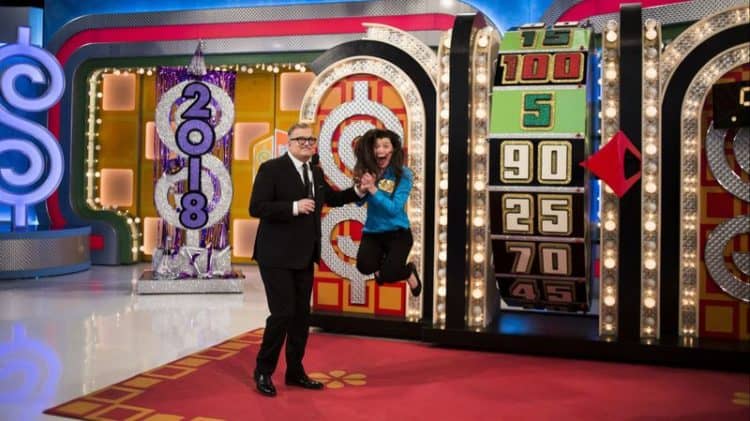
The Price is Right is one of daytime television’s longest running game shows. While many game shows have been replaced by talk shows, The Price is Right has given away hundreds of millions of dollars in cash and prizes and continues to draw viewers in spite of milquetoast host Drew Carey. But despite the repetitive nature of the show – where people are selected, bid on prizes, then either win or lose — it continues to draw people. This is evidenced by having won an Emmy as best daytime game show. There are a number of life lessons hidden in the show, sometimes demonstrated by the “interesting” behavior of both contestants and winners. As we explore a few of these lessons, keep in mind that some of the winners have never won a single thing in their entire lives. Winning anything of value brings a new level of excitement and accomplishment to their lives. It may sound a bit strange, and while some of the responses are more theatrics than genuine, you can be the one who decides which is which.
1. A 50-50 chance is not slanted towards a positive outcome
Many of the games are simple enough: choosing between one of two choices. Mathematically that gives the player a 50-50 chance of winning. But why is it that so many people choose wrong when playing such games? For some unknown reason, people tend to think that a 50-50 chance tends towards their advantage. It’s a weird thing because while the right choice is often obvious to the audience and viewers, the player does not trust their own judgment. There is more than what they are seeing, and reason to be suspicious. There are some guesses that are better than others and have a greater likelihood of having a positive outcome. But when all is said and done, a 50-50 chance offers the same possibility of winning and losing.
2. People don’t always act the way you want them to
Many people define someone who is boring as someone who is very predictable in their thoughts and actions. Rarely do you see such behavior on The Price is Right because the audience from which the contestants are selected is from all over the United States and sometimes Canada. That means a variety of cultures and ways of thinking about how to live life and express their happiness. Age doesn’t seem to be a factor, though some of the 70 and 80-somethings just can’t muster up the energy needed. There is no need to disparage the behavior of certain people because they don’t fit in to your view of life. It’s just life.
3. You don’t get something for nothing
While it may appear watching the show that people get free prizes, the reality is that the prize isn’t given to them until they sign a document about paying taxes on their winnings and several other terms of acceptance. The price of the prize (or the amount of cash) is added to your tax return and increases your tax burden. In effect you are paying for the prize, just at a discounted rate. If you are a player you really don’t want the car unless you are going to be selling it. Cash is preferred because it doesn’t lose any value and you don’t have to go through any trouble to convert it to cash. That is why so many people love Plinko.
4. Some people are just greedy
This is intended to be understood in a bad sense. Viewers don’t know the net worth of the players on the show, but when people have $25,000 in their pocket they want to go for $50,000. They justify their decision on the basis of “I came here with nothing, so I’m going to go for it.” Greed is behind many of the bad decisions on the show, especially when it comes to cash. It seems one of the show’s premises is that people will get greedy and lose more often than not. No statistics are available on this presumption, but the tiered pricing games where cash can be won tend to follow this principle. Many of the simpler games only offer a 50-50 chance of winning, but those are the games where players get the opportunity for a vacation to some unknown island or a hot tub.
5. Paying attention to the details can be the difference between winning and losing
We have all heard the principle of “read the fine print.” But in many cases the fine print is what is said, not what is read. On The Price is Right there is a brief description given about the item to allegedly improve the player’s chances of winning. But when a player is trying to guess at the price of a car they often don’t pay attention to the details in the description. There is a significant difference in the price of a car with an automatic transmission versus a manual one. People tend to project their own knowledge and experience with buying a car on to the car they are trying to win. But often they miss the details that are quickly spoken. Applying this concept to real life, when discussing anything with the police, a doctor, or an insurance agent it is best to pay close attention to what is said — and not said.
The basic idea behind The Price is Right is simple, and is why so many people fill the audience and play at home. Everyone is somewhat familiar with guessing the price of an item, and is why so many basic grocery items are part of the pricing games. Viewers mock the losers because they didn’t know the price of an item. Yet there are times when listening to the audience (viewers) has had some bad results. Sometimes the crowd is wrong. Think of this as a bonus life lesson that you can take away with you.
 Follow Us
Follow Us





